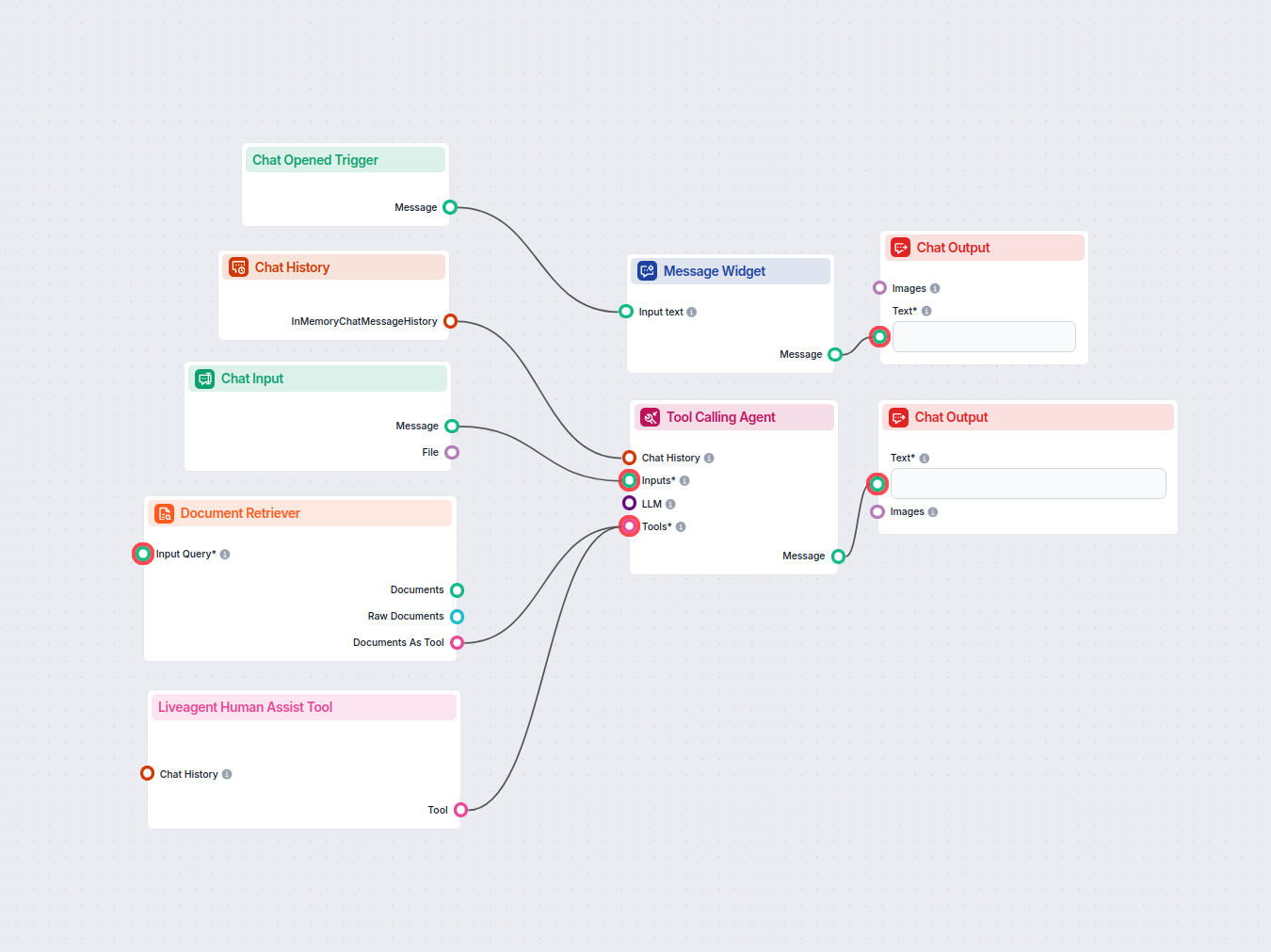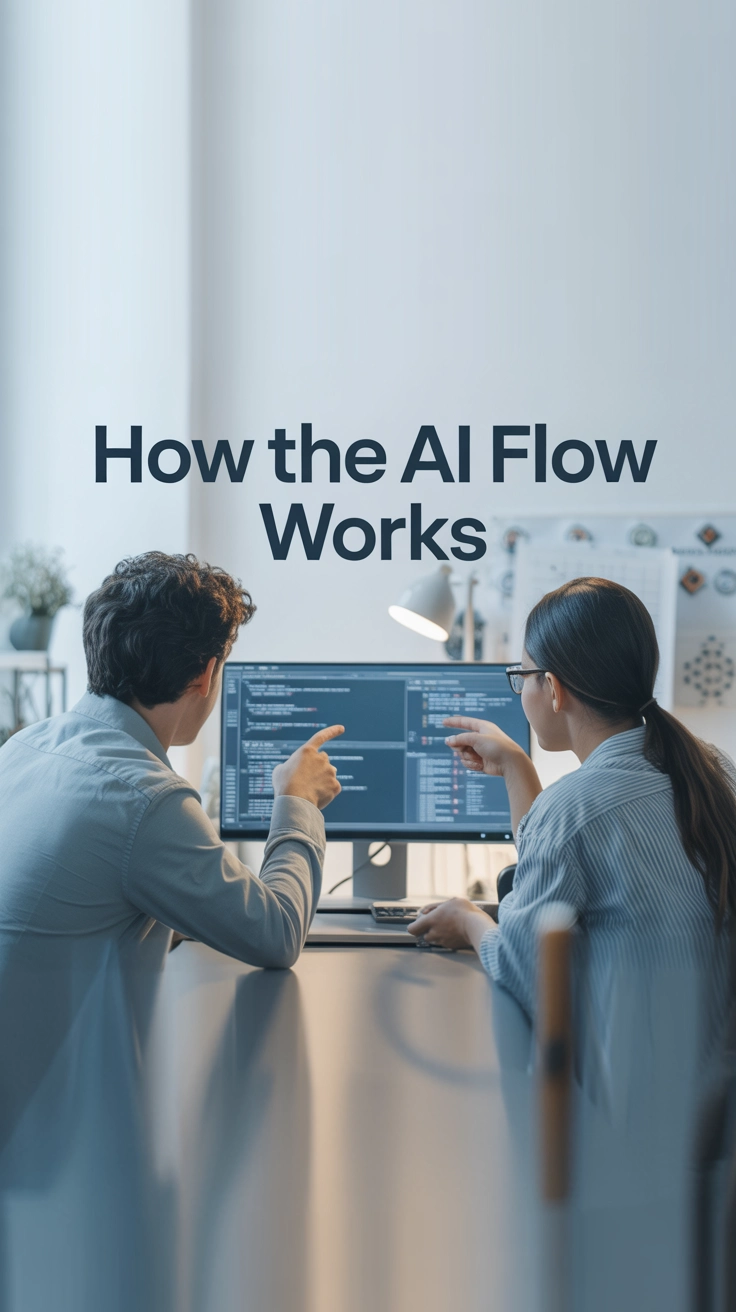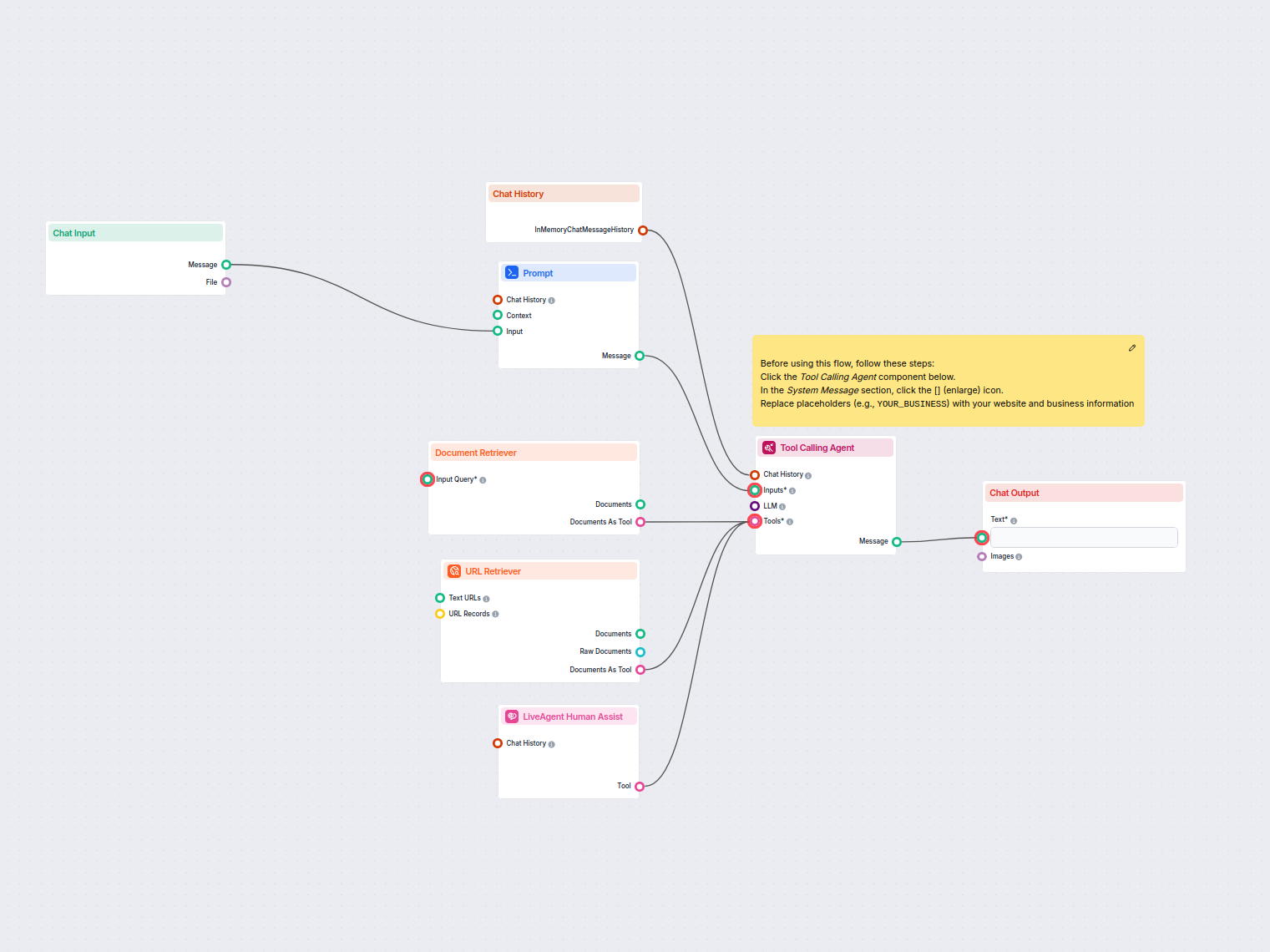Flow description
Purpose and benefits
This workflow automates customer support by combining an AI-powered chatbot with integration to the LiveAgent platform. The chatbot leverages an internal knowledge base to answer customer inquiries. If the AI cannot resolve the customer’s issue, the conversation is seamlessly escalated to a human agent via LiveAgent. Below is a structured description of the workflow, its components, and its potential benefits for scaling and automation.
Overview of Workflow Steps
Chat Initialization & Welcome Message
- When a user opens the chat, a trigger node activates.
- The system displays a welcome message, explaining that the bot can answer questions using the internal knowledge base and, if needed, connect the customer to a live agent.
User Input & Message Handling
- The chat captures user input and tracks the conversation history.
- All messages and files sent by the user are processed and stored for context-aware responses.
Retrieving Knowledge Base Information
- The bot queries internal knowledge sources (via a Document Retriever) to find answers relevant to the user’s query.
- If relevant information is found, the bot provides an answer directly from the knowledge base.
AI as Support Specialist
- An AI agent acts as a technical support specialist, following a detailed system prompt:
- Greets users in their language.
- Seeks to answer questions using the knowledge base.
- Asks for clarification if a question is unclear.
- If the AI cannot find a relevant answer and the question is about the software:
- For English queries: Offers to connect to a live human agent.
- For other languages: Asks if the user wants to speak to an English-speaking agent, and offers connection upon confirmation.
- Always responds in the user’s language.
Escalation to Human Agent
- If the AI cannot resolve the issue, or the user requests it, the workflow can escalate the conversation to a real support agent using LiveAgent.
- The transition includes context from the current chat, ensuring a smooth handover.
Output to User
- All responses, whether from the chatbot or a live agent, are displayed to the user in the chat interface.
Key Components and Their Functions
| Component Name | Functionality |
|---|
| Chat Opened Trigger | Detects when a user initiates a chat session. |
| Message Widget | Sends a friendly, informative welcome message to the user. |
| Chat Output | Displays messages to the user in the chat window. |
| Chat Input | Collects messages and files from the user. |
| Chat History | Maintains a running history of the conversation for context-aware responses. |
| Document Retriever | Searches the internal knowledge base for relevant answers to user queries. |
| LiveAgent Human Assist Tool | Provides a button or process to escalate the chat to a real human agent via LiveAgent. |
| Tool Calling Agent (AI) | Orchestrates responses, utilizing both the Document Retriever and LiveAgent handoff tool. |
Workflow Diagram
Here’s a simplified flow of the described process:
- User opens chat
⬇️ - Welcome message is displayed
⬇️ - User sends a question
⬇️ - AI agent uses chat history and knowledge base to answer
⬇️ - If answer not found
⬇️ - AI offers to connect user to human agent (LiveAgent)
⬇️ - Human agent takes over, if needed
Benefits for Automation and Scaling
- 24/7 Instant Support: The AI chatbot provides immediate answers to common questions, reducing wait times and improving customer satisfaction.
- Efficient Human Escalation: Only complex or unresolved queries are forwarded to human agents, optimizing agent workload and improving efficiency.
- Context-Aware Responses: The use of chat history and knowledge retrieval ensures that responses are tailored and relevant.
- Multi-language Support: The AI handles greetings and answers in the user’s language and manages language transitions for human escalation.
- Reduced Training Costs: The AI acts as a first-line support specialist, allowing human agents to focus on more challenging issues.
- Seamless Handover: Integration with LiveAgent ensures that when escalation is needed, the transition is smooth and includes all relevant context.
Use Cases
- SaaS Customer Support: For software companies looking to provide scalable, automated support with a human backup.
- E-commerce Helpdesks: To answer product, order, or return queries instantly, escalating only complex or sensitive cases.
- Technical Support: For organizations that need to provide technical guidance from both a knowledge base and live experts.
This workflow is especially useful for organizations seeking to automate routine support tasks, scale their support operations efficiently, and maintain high-quality customer service with minimal delays.





